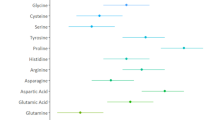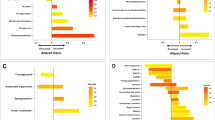Abstract
Background:
Despite the acknowledged importance of ascorbic acid (AA) in maintaining pregnancy and normal fetal development, its precise actions remain obscure. Therefore, we investigated the impact of maternal AA content on the growth of fetal mice during the gestation period using senescence marker protein-30/gluconolactonase (SMP30/GNL) knockout (KO) mice, which cannot synthesize AA in vivo.
Methods:
SMP30/GNL KO mice gave birth after a gestation period under conditions of absent, low, or normal AA intake. AA was measured using high-performance liquid chromatography and electrochemical detection. Whole-body sections were stained with hematoxylin and eosin, Elastica van Gieson, and Azan.
Results:
The mothers in the group absent AA intake failed to bear young because of incomplete fetal development. Offspring born under the low-AA condition generally died within a few days after birth. Morphological analysis revealed that the latter neonates of SMP30/GNL KO mothers whose intake of AA was low during gestation manifested abnormal cardiac dilation, congestion of the liver and lungs, incompletely expanded pulmonary alveoli, and impaired vertebral bodies. In contrast, a normal AA diet produced healthy progeny.
Conclusion:
A diet sufficiently replete with AA is essential during the gestational period for normal tissue development in the fetus and neonate.
Similar content being viewed by others
Log in or create a free account to read this content
Gain free access to this article, as well as selected content from this journal and more on nature.com
or
References
Lane DJ, Lawen A . Ascorbate and plasma membrane electron transport–enzymes vs efflux. Free Radic Biol Med 2009;47:485–95.
Eipper BA, Mains RE, Glembotski CC . Identification in pituitary tissue of a peptide alpha-amidation activity that acts on glycine-extended peptides and requires molecular oxygen, copper, and ascorbic acid. Proc Natl Acad Sci USA 1983;80:5144–8.
May V, Eipper BA . Regulation of peptide amidation in cultured pituitary cells. J Biol Chem 1985;260:16224–31.
Friedman S, Kaufman S . 3,4-dihydroxyphenylethylamine beta-hydroxylase. Physical properties, copper content, and role of copper in the catalytic activity. J Biol Chem 1965;240:4763–73.
Levine M, Morita K, Pollard H . Enhancement of norepinephrine biosynthesis by ascorbic acid in cultured bovine chromaffin cells. J Biol Chem 1985;260:12942–7.
Levine M . New concepts in the biology and biochemistry of ascorbic acid. N Engl J Med 1986;314:892–902.
Peterkofsky B . Ascorbate requirement for hydroxylation and secretion of procollagen: relationship to inhibition of collagen synthesis in scurvy. Am J Clin Nutr 1991;54(Suppl 6):1135S–40S.
Nishikimi M . Oxidation of ascorbic acid with superoxide anion generated by the xanthine-xanthine oxidase system. Biochem Biophys Res Commun 1975;63:463–8.
Bielski BH, Richter HW, Chan PC . Some properties of the ascorbate free radical. Ann N Y Acad Sci 1975;258:231–7.
Nishikimi M, Koshizaka T, Ozawa T, Yagi K . Occurrence in humans and guinea pigs of the gene related to their missing enzyme L-gulono-gamma-lactone oxidase. Arch Biochem Biophys 1988;267:842–6.
Mizushima Y, Harauchi T, Yoshizaki T, Makino S . A rat mutant unable to synthesize vitamin C. Experientia 1984;40:359–61.
Maeda N, Hagihara H, Nakata Y, Hiller S, Wilder J, Reddick R . Aortic wall damage in mice unable to synthesize ascorbic acid. Proc Natl Acad Sci USA 2000;97:841–6.
Gabbay KH, Bohren KM, Morello R, Bertin T, Liu J, Vogel P . Ascorbate synthesis pathway: dual role of ascorbate in bone homeostasis. J Biol Chem 2010;285:19510–20.
Ishigami A, Maruyama N . Significance of SMP30 in gerontology. Geriatr Gerontol Int 2007;7:316–25.
Maruyama N, Ishigami A, Kondo Y . Pathophysiological significance of senescence marker protein-30. Geriatr Gerontol Int 2010;10(Suppl 1): S88–98.
Kondo Y, Inai Y, Sato Y, et al Senescence marker protein 30 functions as gluconolactonase in L-ascorbic acid biosynthesis, and its knockout mice are prone to scurvy. Proc Natl Acad Sci USA 2006;103:5723–8.
Qiu S, Li L, Weeber EJ, May JM . Ascorbate transport by primary cultured neurons and its role in neuronal function and protection against excitotoxicity. J Neurosci Res 2007;85:1046–56.
Tveden-Nyborg P, Lykkesfeldt J . Does vitamin C deficiency result in impaired brain development in infants? Redox Rep 2009;14:2–6.
Sotiriou S, Gispert S, Cheng J, et al Ascorbic-acid transporter Slc23a1 is essential for vitamin C transport into the brain and for perinatal survival. Nat Med 2002;8:514–7.
Adlard BP, De Souza SW, Moon S . Ascorbic acid in fetal human brain. Arch Dis Child 1974;49:278–82.
Harrison FE, Meredith ME, Dawes SM, Saskowski JL, May JM . Low ascorbic acid and increased oxidative stress in gulo(-/-) mice during development. Brain Res 2010;1349:143–52.
Koike K, Kondo Y, Sekiya M, et al Complete lack of vitamin C intake generates pulmonary emphysema in senescence marker protein-30 knockout mice. Am J Physiol Lung Cell Mol Physiol 2010;298:L784–92.
Schnieke A, Harbers K, Jaenisch R . Embryonic lethal mutation in mice induced by retrovirus insertion into the alpha 1(I) collagen gene. Nature 1983;304:315–20.
Ishigami A, Fujita T, Handa S, et al Senescence marker protein-30 knockout mouse liver is highly susceptible to tumor necrosis factor-alpha- and Fas-mediated apoptosis. Am J Pathol 2002;161:1273–81.
Iwama M, Shimokado K, Maruyama N, Ishigami A . Time course of vitamin C distribution and absorption after oral administration in SMP30/GNL knockout mice. Nutrition 2011;27:471–8.
Thurlbeck WM . The internal surface area of nonemphysematous lungs. Am Rev Respir Dis 1967;95:765–73.
Sato Y, Uchiki T, Iwama M, Kishimoto Y, Takahashi R, Ishigami A . Determination of dehydroascorbic acid in mouse tissues and plasma by using tris(2-carboxyethyl)phosphine hydrochloride as reductant in metaphosphoric acid/ethylenediaminetetraacetic acid solution. Biol Pharm Bull 2010;33:364–9.
Acknowledgements
We thank Phyllis Minick for the excellent English editorial assistance.
Author information
Authors and Affiliations
Corresponding author
Rights and permissions
About this article
Cite this article
Kishimoto, Y., Kanai, T., Sato, K. et al. Insufficient ascorbic acid intake during gestation induces abnormal cardiac dilation in fetal and neonatal SMP30/GNL knockout mice. Pediatr Res 73, 578–584 (2013). https://doi.org/10.1038/pr.2013.22
Received:
Accepted:
Published:
Issue date:
DOI: https://doi.org/10.1038/pr.2013.22
This article is cited by
-
Ascorbic acid during the suckling period is required for proper DNA demethylation in the liver
Scientific Reports (2020)
-
The epigenetic role of vitamin C in health and disease
Cellular and Molecular Life Sciences (2016)
-
Maternal vitamin C deficiency during pregnancy results in transient fetal and placental growth retardation in guinea pigs
European Journal of Nutrition (2015)



